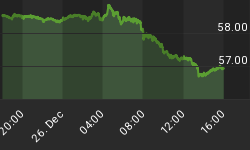Artificial intelligence, or rather things like machine learning and automation, which are often wrongly called artificial intelligence, is a big thing in oil and gas right now. The hype around AI spreads a lot further than the oil and gas industry, but in it, the technology is making the first splashes and it looks like they are fast multiplying.
While “AI”—or more accurately predictive and analytic algorithms, and automation—in the upstream segment of the industry has garnered some attention already, there is a somewhat surprising part of the oil and gas industry that may be as ripe as exploration and production for some software help: permitting and environmental assessment.
Researchers from the Environmental Defense Fund are working on a system using Natural Language Processing that could streamline what is now a very complex process to the benefit of all stakeholders involved.
Here’s how one of the researchers, Evan Patrick, puts it: “Natural Language Processing pulls out information similar to how humans get information from reading. If developed and scaled up, it could turbo-charge critical analyses of oil and gas permit applications that companies submit under the National Environmental Protection Act. Other types of development proposals could benefit, too. This would, in turn, help local regulators and other stakeholders in Wyoming and beyond determine whether a project will pose a threat to wildlife, water or a cultural heritage site – and to better balance industry claims.”
This sounds like a solution to so many problems that it should be implemented immediately. And yet, getting an idea that involves processing huge amounts of information—and machine learning does involve exactly this sort of information processing—is a slow and torturous job. Basically, it means teaching computers to “scrub” data from various sources, as Patrick puts it. But while this sounds simple, this teaching process involves the input of massive amounts of data, and doing this takes a lot of time. Related: ICE's New Bitcoin Exchange Leverages Microsoft Cloud
This is a problem that’s not unique in oil and gas, and for those developing the algorithms it’s not really a problem: it’s a step along the way that you simply can’t skip. While it’s true that we’ve become used to everything happening almost immediately, sometimes good things take time. Training algorithms to find and process information regarding oil and gas permits and environmental assessments will make life easier for thousands of people, and will make the permitting and assessment process that much more reliable.
The AI market in oil and gas has been estimated to reach US$2.85 billion by 2022, growing by a compound annual growth rate of 12.66 percent. Again, this AI market actually involves predictive algorithms, automation systems, and analytics, which are not exactly artificial intelligence, but the trend is clear: oil and gas is adopting more and more software solutions to improve their results and bottom lines. But here’s the great thing about algorithms that help the permitting and environmental assessment process: it will benefit everyone from Big Bad Oil to environmentalists.
Put very simply, “Advanced computer processing can help us catch problems that now fall through the cracks, and to react more quickly when we do find them,” according to Patrick.
By Irina Slav for Oilprice.com
More Top Reads From Safehaven.com

















